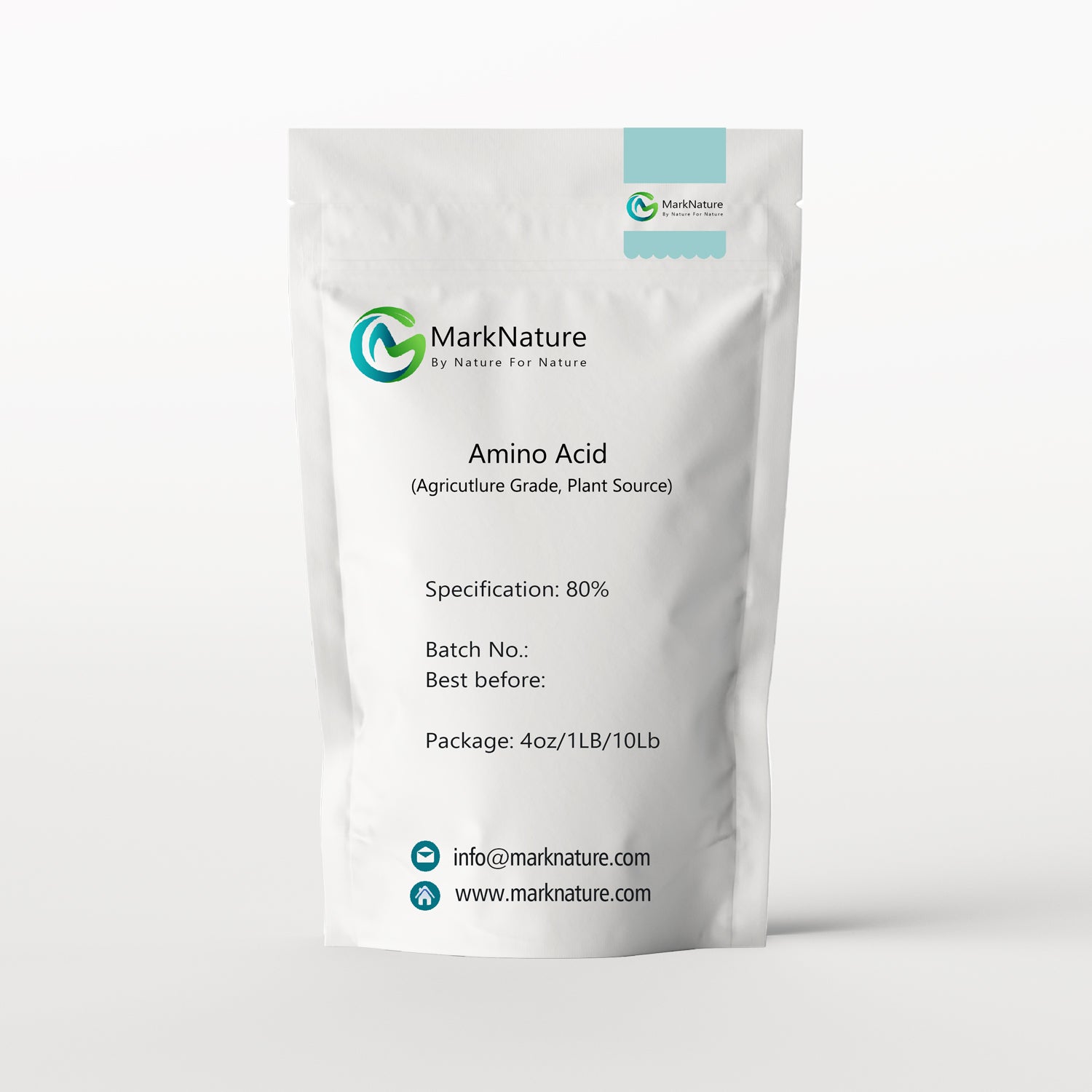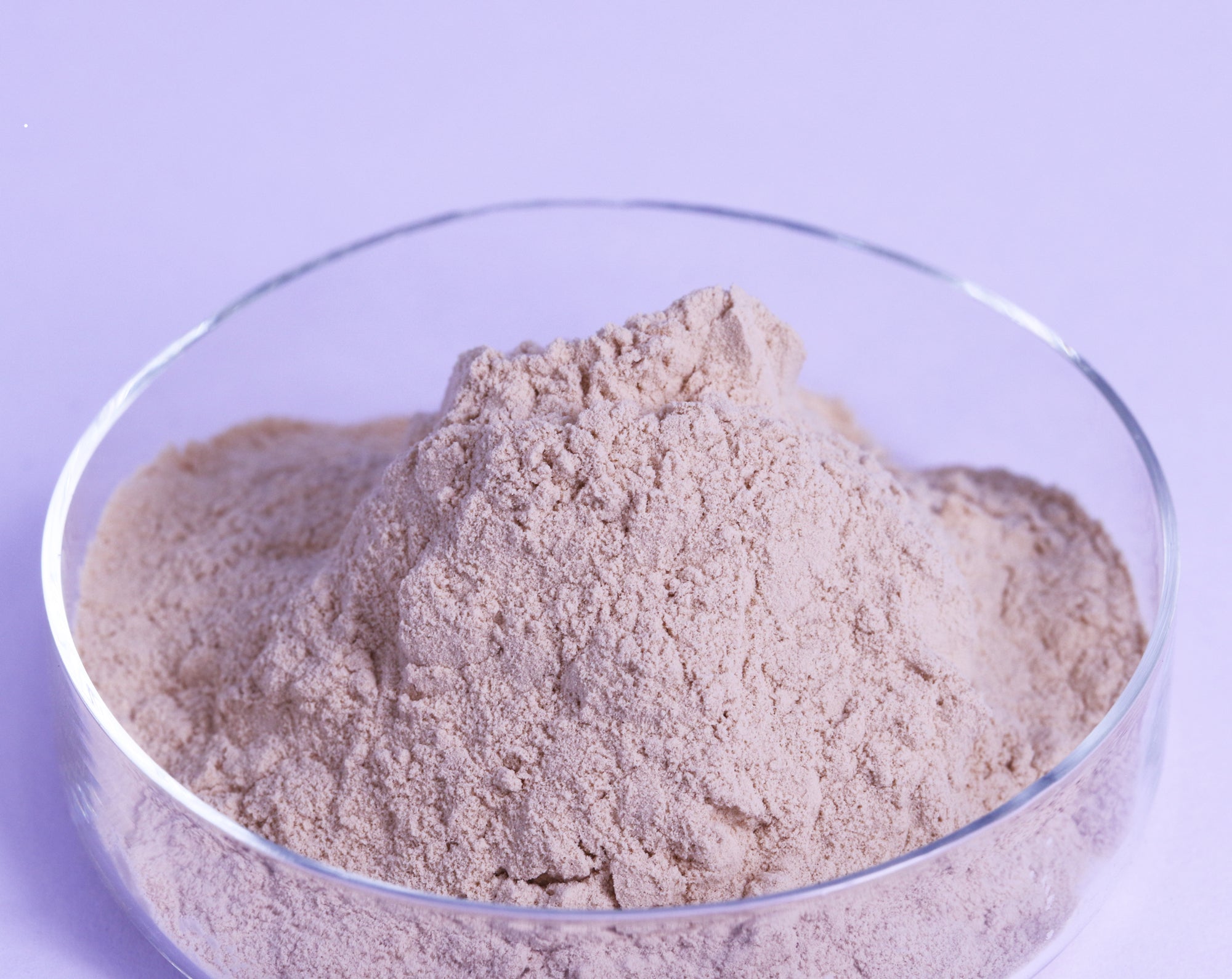Description
MarkNature Plant Source Amino Acid is a natural plant-based fertilizer that promotes healthy plant growth. It contains organic amino acids that are easily absorbed by plants and a balanced nutrient profile of nitrogen, phosphorus, and potassium. It is suitable for all types of plants and can be used as a foliar spray or added directly to the soil. It is environmentally friendly and easy to use, with no harmful chemicals. With regular use, it can result in stronger, healthier plants with increased yields and vibrant blooms.
>Features:
1. Vegetal source amino acid extracted from soybean meal through an eco-friendly enzymatic hydrolysis process, retains the maximum biological activity of amino acids.
2. Contains 18 L-Amino Acid, Total Amino Acid content >80%, Organic Nitrogen>13%, pH 5~7
3. Fine water-soluble powder with characteristic natural amino acid odor.
4. It is widely used in all kinds of crops, vegetables, fruit trees, houseplants, lawn, herbs, etc. as ground, foliar or drip irrigation fertilizer.
5. As one of a natural biostimulant, amino acid provides sustained long-term release of organic nitrogen and improvement of the photosynthetic process and the enhancement of crop tolerance to stress.
>Specification:
Total Amino Acids: 80.0% Min
Amino Acid Nitrogen: 12.8% Min.
Loss on drying: 5.00% Max
Ash: 3.0% Max
PH: 5.0~7.0
>Function:
1. This product provides comprehensive, sustained, and balanced nutrition that meets the crop's developmental needs throughout its growth period.
2. It accelerates the physiological and biochemical reactions of plants and promotes the accumulation of materials, resulting in premature maturity of crops by about 10 days.
3. It improves production and enhances the quality of agricultural products. This leads to better color, increased sugar content, longer flowering periods for flowers, brighter colors, and oil-green leaves. It also promotes robust plant growth.
4. It strengthens plant growth and enhances resistance to environmental stressors.
5. It improves soil properties, optimizes the ecological environment, and helps to form a stable aggregate structure in the soil while passivating harmful elements.
>Advantages:
1. It enhances absorption through the roots.
2. It increases crop resistance to adverse conditions such as drought, frost, salinity, hail, and disease.
3. It improves the flavor, color, firmness, and preservation of fruits.
4. It makes it easier for the plant to produce its own protein, which saves energy required to produce amino acids.
5. It benefits the formation of proteins and plant cells.
>Application & Method:
This product can be used for vegetables, fruit trees, melons, herbs, and other crops.
Fertilization:
1. This product can be used as a base fertilizer, drip irrigation, foliar fertilizer, or soil fertilizer.
2. The dilution rate varies according to the method of application.
3. It can be mixed with most nutrient solutions and pesticides.
4. It is important to conduct a miscibility test before the first application.
Usage:
(1) Seed treatment:
Soaking: Dilute 1:2,000~5,000 times, soak seeds for 8 to 12 hours, then dry before planting.
Seed dressing: Dilute 1:3,000~5,000 times, spray the seeds evenly, wait for 3 to 5 hours, then dry before planting.
(2) Foliage spraying and root irrigation:
1) Foliage spraying:
Spray the liquid fertilizer evenly on the front and back sides of the leaves, at a concentration of 4,500 to 6,000 times per acre per need liquid fertilizer 200 to 250 grams, or at a mechanical spray dilution ratio of 1:3,000 to 4,500 times. Note: spray within 8 hours after the rain to be re-spray; Valley crop flowering should not be sprayed; can be mixed with acidic pesticides.
2) Root irrigation:
Dilute 1:3,000 times and apply directly to the roots of plants. Use 500 to 800 grams of fertilizer per acre.
3) Mix with base fertilizer: Add 0.15 to 0.2 kg into base fertilizer.
4) In general, annual crops are sprayed at the seedling stage for the first time, then sprayed every 15 to 20 days. Perennial crops are sprayed for the first time after the show leaves, then sprayed every 20 to 25 days. Short crops are sprayed every 7 to 10 days.


